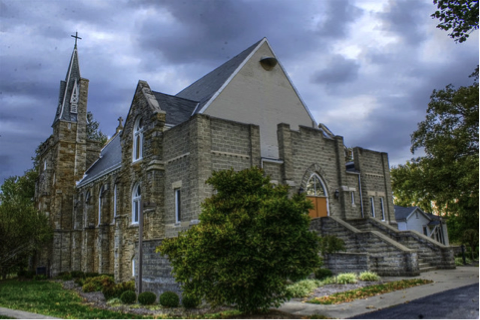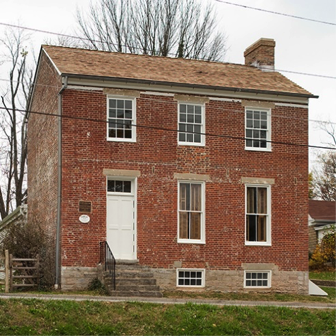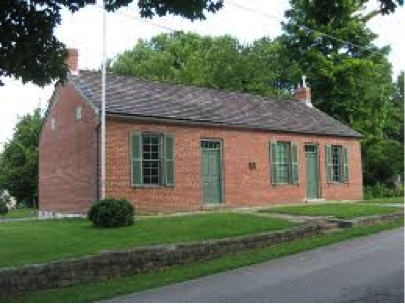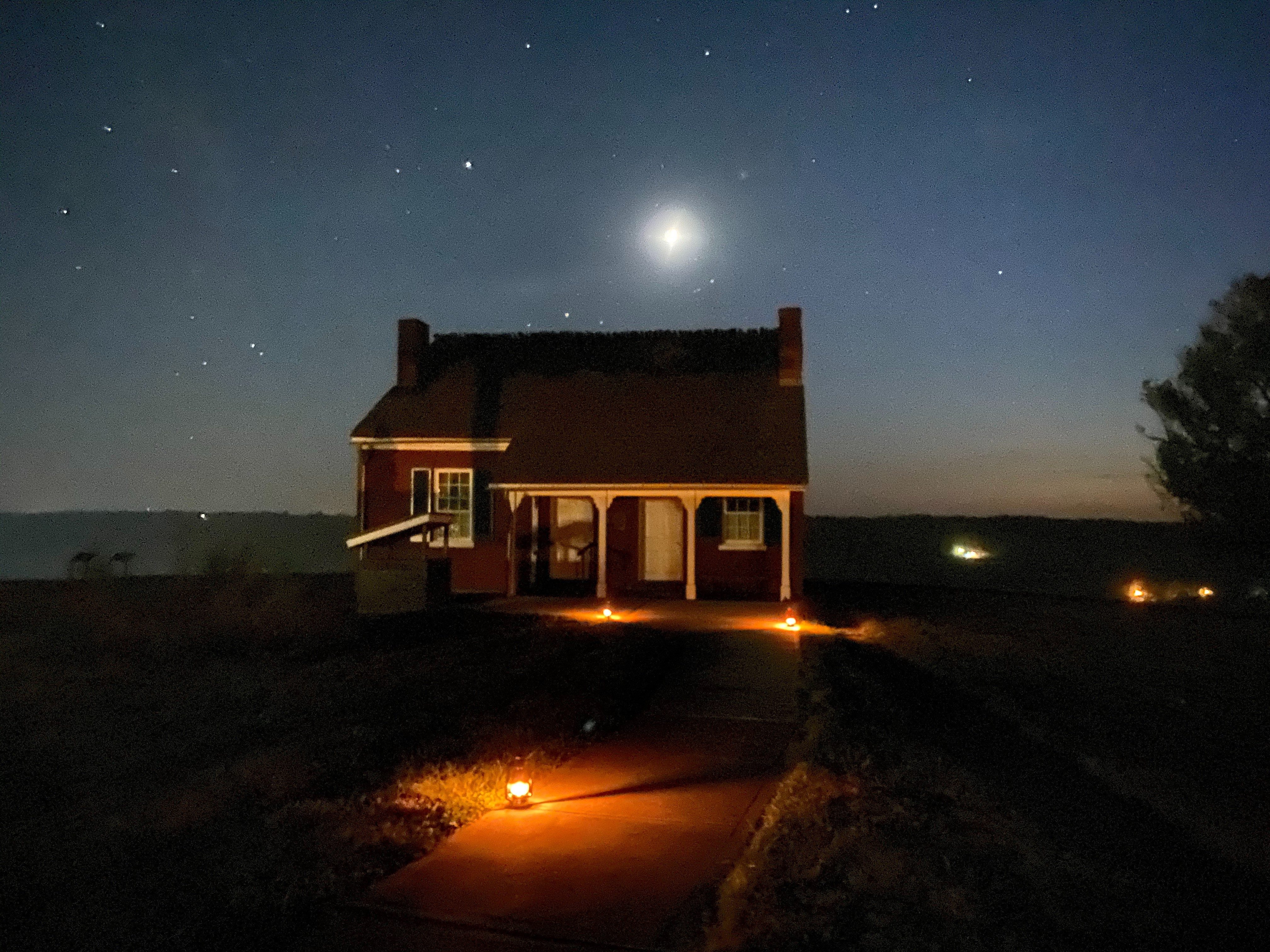History & Museums
Brown County is home to historical sites of regional and national significance that offer visitors a fascinating step back in time.
John Rankin House
Located on a bluff with sweeping views of the Ohio River, the Rankin House tells the incredible story of one of the most active and well documented “stations” on the Underground Railroad. Here visitors can learn how Reverend John Rankin and his family worked with a network of like-minded abolitionists to help thousands of enslaved people on their path to freedom.
This National Historic Landmark has recently undergone a complete renovation and visitors can explore the house and surrounding grounds through guided and self-guided tours.
John Parker House
Just down the hill from the Rankin House on Ripley’s historic Front Street is the well preserved home of John Parker. A daring underground railroad conductor, a successful entrepreneur with several patents, a father who sent all his children to college, and a former slave who bought his freedom, John Parker constantly risked his safety and that of his family to help escaping slaves cross the Ohio River.
Ripley's Historic Museums
Other interesting historical sites in Ripley include The Ohio Tobacco Museum representing the story of Ripley’s unique southern Ohio tobacco agricultural history and The Ripley Museum, a federal design house from the1850's featuring 10 rooms with collectibles dating from the mid 18th to mid 20th century.
Ripley, Ohio
The historic village of Ripley is part of the Ohio River Scenic Byway and has a 55-acre historic district that’s listed on the National Register of Historic Places. Walk Front Street and enjoy the sites and sounds of river life. Take in the historic riverside homes or try one of the great local restaurants.
PRESIDENT ULYSSES S. GRANT
Tucked away in the heart of the Brown County seat of Georgetown are the boyhood home and schoolhouse of Civil War General and two term President of the United States, Ulysses S. Grant.
Grant's Boyhood Home was built in 1823. Designated a National Historic Landmark, it opened for visitors in 1982. Today it is the property of the Ohio History Connection, while the museum is staff and maintained by the Homestead Association.
The two-room Schoolhouse attended by Ulysses was built in 1829 and served as Georgetown's one-room schoolhouse for over twenty years until it was replaced in 1852. The building became Ohio History Connection property in 1941, and it is now regularly staffed, and can be toured with the homestead.
Located directly across the street from the Boyhood Home, the Tannery served as the Grant family's livelihood for many years. Built in 1823 by Jesse Grant, it was no favorite place of young Ulysses, and work there helped steer him towards West Point and the Presidency. The building has only recently been acquired by the Association, and is currently not open to visitors.

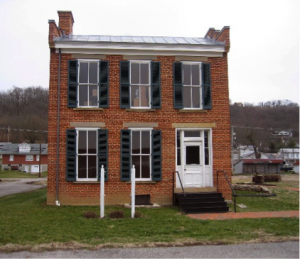

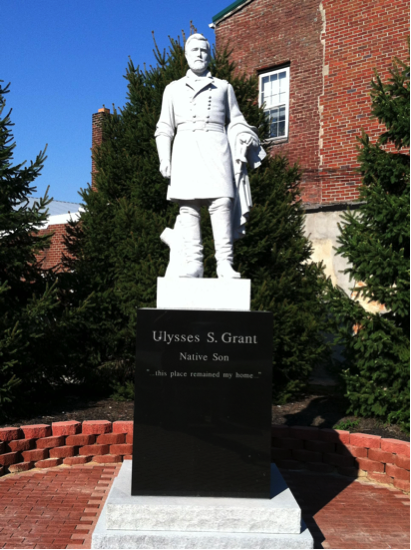
The Native Son Statue is located on the north corner of the courthouse square. He stands with his sword and riding coat, face set south to the river beyond. His jacket bears four stars, denoting him as Commanding General of the United States Army. The statue can be viewed at any time of the day or night.
Located just outside of town, the Ohio Department of Veterans Services operates the Ohio Veteran's Home that features a Brass Statue of U.S. Grant. When combined with the Native Son statue in the courthouse square, makes Georgetown, Ohio one of only two places in the world to have more than one statue of Grant, the other being Washington DC.
Georgetown, Ohio
Georgetown is the county seat of Brown County, Ohio. The first settlers arrived in 1819. The community grew very slowly, having approximately eight hundred residents in 1846. That same year, the town contained four churches and a newspaper.
Forty years later, Georgetown remained virtually unchanged. With 1,293 residents in 1880, the county seat boasted five churches, two of which were African-American churches, three newspapers, a bank, and a woolen mill, the town’s largest single employer with nineteen workers. City residents were active in the tobacco trade, shipping tobacco all over the world. Tobacco was the county’s largest crop.
Even today, Georgetown has remained relatively small. The historic district includes 17 acres with 42 historic buildings. You can catch a show by The Gaslight Theater Players at the Gaslight Theater, listen to Music on the Square, experience unique shopping along commercial row, or relax at the park.
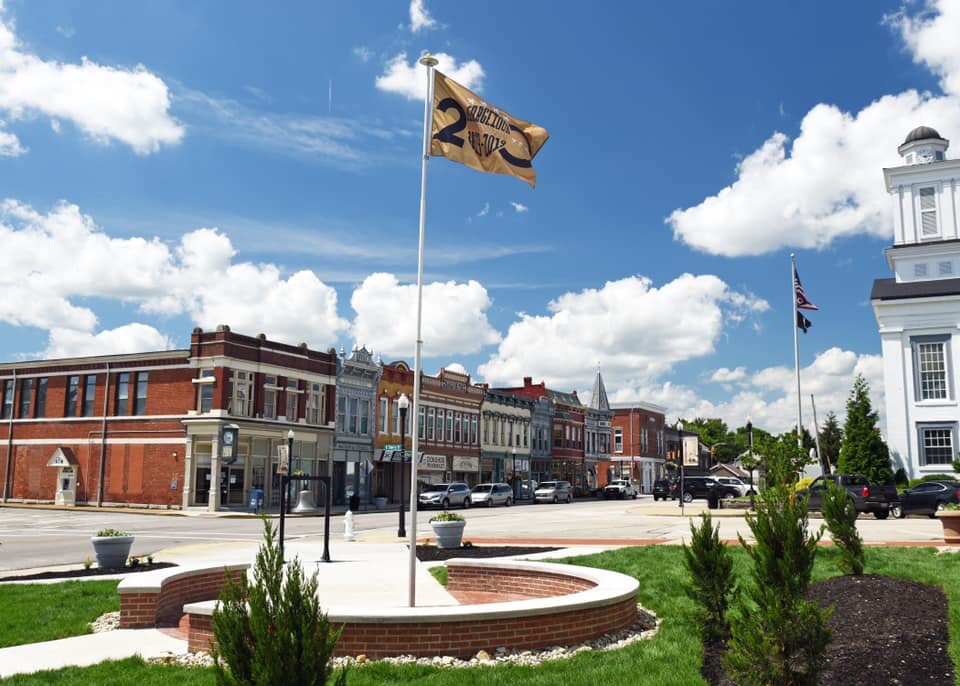
Chatfield College
Chatfield is part of an educational legacy begun in 1845 when 11 Ursuline nuns, led by Mother Julia Chatfield, emigrated from France to start a school in the wilderness of Brown County, Ohio. The beautiful and historic 99 acre campus is open to the public and offers several community events each year. Sacred Heart Chapel welcomes the community for mass every Wednesday at 8:30am and features stained glass windows from Holland, intricate wood carvings, and a rare Roosevelt organ. Chatfield is a private, Catholic, liberal arts college offering the Associate of Arts degree.
